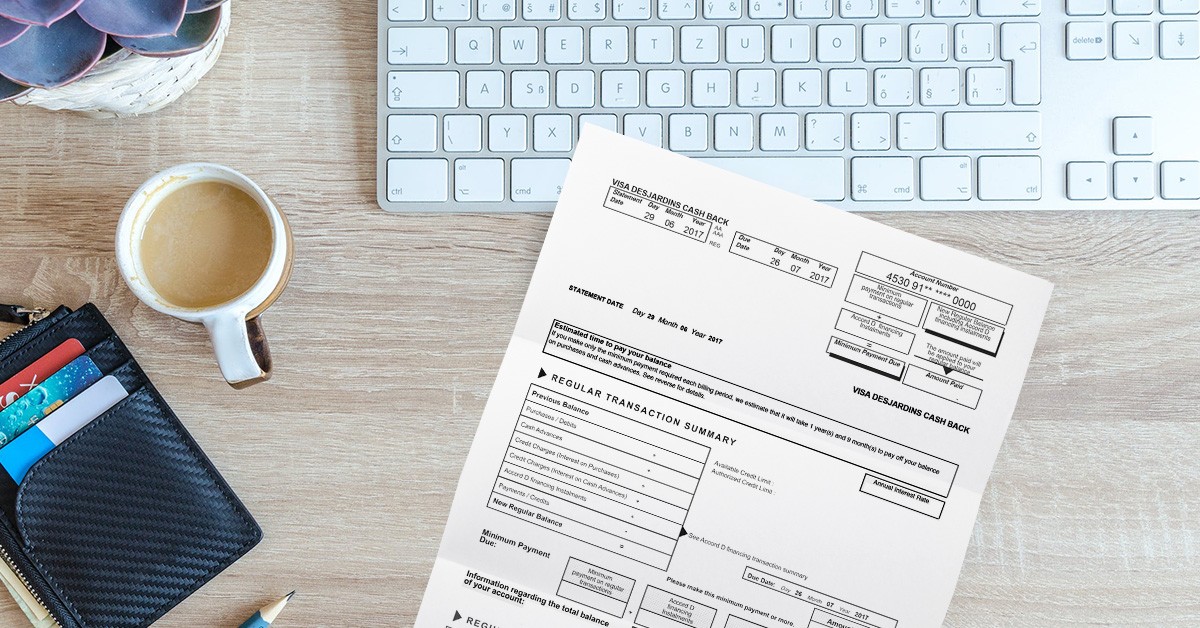Home>Finance>If I Have A $300 Credit Limit, How Much Should I Spend


Finance
If I Have A $300 Credit Limit, How Much Should I Spend
Published: March 5, 2024
Learn how to effectively manage your $300 credit limit and optimize your spending to improve your financial situation. Explore smart finance strategies and tips.
(Many of the links in this article redirect to a specific reviewed product. Your purchase of these products through affiliate links helps to generate commission for LiveWell, at no extra cost. Learn more)
Table of Contents
**
Introduction
**
Understanding how to effectively manage a credit limit is a crucial aspect of personal finance. It involves making informed decisions to maintain financial stability and avoid unnecessary debt. When faced with a $300 credit limit, individuals often wonder about the optimal spending amount. This article aims to provide comprehensive insights into this query, offering practical advice and tips for responsible credit usage.
Navigating the world of credit can be daunting, especially for those new to managing their finances. A credit limit represents the maximum amount of money a financial institution is willing to lend to an individual. It serves as a financial safety net, allowing individuals to make purchases and pay bills even when their bank account balance is low. However, it's important to recognize that a credit limit is not a license to spend recklessly. Instead, it should be viewed as a tool for building credit history and managing expenses effectively.
In the following sections, we will delve into the factors that influence credit limit management, the considerations individuals should bear in mind before making purchases, and recommended spending habits to ensure responsible credit utilization. Additionally, practical tips for managing a $300 credit limit will be provided to empower individuals with the knowledge needed to make sound financial decisions. By the end of this article, readers will have a clear understanding of how to navigate their $300 credit limit wisely, fostering financial well-being and stability.
**
Understanding Your Credit Limit
**
Before delving into how much to spend with a $300 credit limit, it’s essential to understand the dynamics of credit limits. A credit limit is the maximum amount of money that a financial institution extends to a cardholder, dictating the ceiling on their credit card spending. It is determined by various factors, including the individual’s credit history, income, and overall creditworthiness.
When a credit card is issued, the provider assesses the applicant’s financial background to assign an appropriate credit limit. Factors such as income, existing debt, and credit score play a pivotal role in this evaluation. Individuals with a steady income and a favorable credit history are more likely to receive higher credit limits, while those with limited credit history or financial instability may be assigned lower limits.
Understanding the implications of a credit limit is crucial. Exceeding the assigned limit can result in penalties, increased interest rates, and a negative impact on one’s credit score. On the other hand, responsible usage can lead to improved credit scores and increased trust from financial institutions, potentially leading to higher credit limits in the future.
It’s important to note that a credit limit is not a directive to spend up to that threshold. Instead, it should be viewed as a financial guardrail, signaling the maximum amount that can be borrowed. Being mindful of this distinction is fundamental to responsible credit management.
By comprehending the significance of a credit limit and the factors that influence its determination, individuals can make informed decisions regarding their spending habits. In the subsequent sections, we will explore the considerations to ponder before utilizing a $300 credit limit and the recommended spending practices to ensure financial prudence.
**
Factors to Consider Before Spending
**
When faced with a $300 credit limit, several factors warrant careful consideration before making purchasing decisions. Understanding these elements can empower individuals to manage their credit effectively and avoid potential financial pitfalls.
1. Credit Utilization Ratio: The credit utilization ratio, which measures the amount of credit used relative to the total available credit, is a critical factor. It is advisable to keep this ratio below 30% to maintain a healthy credit score. For a $300 credit limit, this translates to utilizing no more than $90 at any given time.
2. Monthly Income: Evaluating one’s monthly income is essential when determining how much to spend within the credit limit. It is prudent to assess whether the intended purchases align with the available income and existing financial obligations. This consideration can help prevent excessive debt accumulation.
3. Upcoming Expenses: Anticipating upcoming expenses, such as utility bills or essential purchases, is crucial. Allocating a portion of the credit limit for these expenses ensures that they can be covered without straining one’s finances.
4. Emergency Fund: Maintaining an emergency fund is imperative. While a credit card can serve as a financial safety net, having a separate emergency fund for unexpected expenses can mitigate the reliance on credit, promoting financial resilience.
5. Interest and Fees: Understanding the implications of interest rates and associated fees is essential. Carrying a balance on the credit card can lead to accruing interest, impacting future financial obligations. It is advisable to be mindful of these costs when considering spending within the credit limit.
By taking these factors into account, individuals can make informed decisions regarding their credit utilization. This thoughtful approach can contribute to responsible financial management and the cultivation of healthy spending habits. In the subsequent section, we will delve into the recommended spending practices tailored to a $300 credit limit, providing actionable insights for prudent financial conduct.
**
Recommended Spending Habits
**
When managing a $300 credit limit, adopting prudent spending habits is paramount to maintain financial stability and cultivate a positive credit history. The following guidelines can serve as a blueprint for responsible credit utilization:
1. Budget-Conscious Purchases: Prioritize essential purchases and adhere to a budget-conscious approach. Assess the necessity of each expense and ensure that it aligns with your financial means and priorities. This mindful approach can prevent impulsive spending and contribute to fiscal discipline.
2. Regular Monitoring: Routinely monitor your credit card transactions and track your spending. This proactive measure can help you stay within your credit limit and promptly identify any unauthorized charges or discrepancies, bolstering financial vigilance.
3. Timely Payments: Strive to make timely payments to avoid incurring late fees and interest charges. Setting up payment reminders or automatic payments can facilitate this process, ensuring that your credit utilization remains within the prescribed limit.
4. Credit Utilization Management: Given the $300 credit limit, judiciously manage your credit utilization. Aim to keep your balance well below the limit, ideally below 30% of the available credit, to demonstrate responsible credit usage and safeguard your credit score.
5. Emergency Reserves: Preserve a portion of your credit limit for unforeseen expenses or emergencies. Having this buffer can provide financial security and mitigate the need to exhaust your credit limit in unexpected situations.
6. Building Credit History: Utilize your credit card for small, manageable purchases to build a positive credit history. Consistent, responsible usage can bolster your creditworthiness over time, potentially paving the way for increased credit limits and favorable financial opportunities.
By adhering to these recommended spending habits, individuals can leverage their $300 credit limit effectively, fostering financial prudence and fortifying their financial well-being. In the subsequent section, practical tips for managing a $300 credit limit will be outlined, providing actionable strategies for navigating credit utilization with confidence and foresight.
**
Tips for Managing Your Credit Limit
**
Effectively managing a $300 credit limit necessitates a thoughtful and strategic approach. Implementing the following tips can empower individuals to navigate their credit limit with prudence and foresight:
1. Utilize Credit Tracking Tools: Leverage credit tracking tools and mobile applications to monitor your credit card activity. These resources offer real-time insights into your spending, available credit, and payment due dates, enabling informed financial decision-making.
2. Set Custom Spending Alerts: Many financial institutions provide the option to set custom spending alerts. Take advantage of this feature to receive notifications when your balance approaches a predefined threshold, ensuring that you remain mindful of your credit utilization.
3. Regularly Review Statements: Dedicate time to review your credit card statements regularly. Scrutinizing your transactions can help identify any erroneous charges, unauthorized expenses, or potential signs of fraudulent activity, safeguarding your financial integrity.
4. Opt for Automatic Payments: Consider setting up automatic payments for the minimum amount or the full balance. This automated approach can prevent missed payments, minimizing the risk of late fees and bolstering your credit management practices.
5. Communicate with Your Issuer: Inquire about the possibility of a credit limit increase based on your responsible credit usage. Engaging in proactive communication with your card issuer can elucidate potential opportunities for enhancing your credit limit over time.
6. Educate Yourself on Credit Terms: Familiarize yourself with the terms and conditions of your credit card, including interest rates, fees, and grace periods. This knowledge equips you to make informed financial choices and navigate your credit limit with confidence.
7. Seek Financial Guidance if Needed: If you encounter challenges in managing your credit limit or require clarity on financial matters, consider seeking guidance from a financial advisor or credit counseling service. Professional insight can provide valuable strategies for optimizing your credit management.
By incorporating these tips into your financial practices, you can harness the potential of your $300 credit limit while fortifying your fiscal acumen. These proactive measures can engender financial resilience and foster a judicious approach to credit utilization, laying the groundwork for sustained financial well-being.
**
Conclusion
**
Navigating a $300 credit limit demands a blend of financial prudence, strategic planning, and responsible decision-making. By comprehending the nuances of credit limits and embracing recommended spending habits, individuals can leverage their credit limit as a tool for financial empowerment rather than succumbing to potential pitfalls.
Understanding the factors that influence credit limit management, such as the credit utilization ratio, monthly income, and upcoming expenses, is pivotal. By considering these elements before making purchasing decisions, individuals can align their spending with their financial capacity, fostering fiscal discipline and stability.
Adopting prudent spending habits tailored to a $300 credit limit is instrumental in cultivating responsible credit utilization. Embracing budget-conscious purchases, regular monitoring of transactions, and timely payments can fortify financial integrity and contribute to sustained fiscal well-being.
Furthermore, implementing actionable tips for managing a $300 credit limit, ranging from leveraging credit tracking tools to exploring the potential for credit limit increases, can empower individuals to navigate their credit limit with confidence and foresight.
Ultimately, the $300 credit limit serves as a gateway to building a positive credit history, demonstrating responsible financial conduct, and fostering a robust foundation for future financial endeavors. By approaching credit utilization with mindfulness and informed decision-making, individuals can harness the potential of their credit limit while safeguarding their financial stability.
In conclusion, managing a $300 credit limit necessitates a balanced blend of vigilance, prudence, and financial acumen. By embracing the insights and strategies outlined in this article, individuals can embark on a journey of responsible credit management, paving the way for enduring financial wellness and empowerment.













